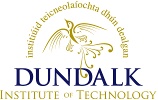Caraher, Robbie (2015) An Examination of de-culverting as a mechanism of Flood management. Bachelors thesis, Dundalk Institute of Technology.
|
PDF
- Accepted Version
Restricted to Registered users only Download (6MB) |
Abstract
Major flood events have serious ramifications on human life, the built environment and the natural world. The storm events that occurred in the winter of 2013/14 in Ireland led to an increase in rainfall of one and a half to twice that of normal winter rainfall expected (Met.ie, 2014). The flooding of that period cost €110 million in insurance claims. Though incomparable with flooding events experienced in other parts of the world where loss of life is prevalent Ireland is not immune to extreme weather. Climate change plays a huge part in changing weather patterns. Watercourses ability to deal with rainfall run-off has changed significantly from urbanisation and the increase in the frequency of flood events. The traditional piping of large sections of natural watercourses contributes to the problem. This dissertation examines the role of removing man made structural measures from watercourses i.e. de-culverting as a mechanism within a catchment based approach to flood management. Recent flood management case studies which included de-culverting were evaluated to appraise the effectiveness of this measure. These studies clearly indicated that de-culverting does work as a mechanism of flood management but only in certain circumstances and are heavily site specific. In addition a software numerical model of a stream (Ushers stream in Drogheda) was developed to analyse the impact of removing culverts from the stream. The model was based on the Hydrologic Engineering Center River Analysis System (HEC-RAS) with input data including Stream geometric information and the predicted Design Peak flows (QMED) as calculated from the Flood Studies Update. The model also demonstrated that while the culverts prevent flooding at their position they ultimately convey the flood event downstream at a much quicker rate which leads to an increased risk of flooding at the lowest point of the stream. While the dissertation identifies the benefit of de-culverting it does however highlight its limited value as a standalone measure. De-culverting therefore can play its most productive role if included in a package of integrated catchment based flood management measures.
| Item Type: | Thesis (Bachelors) |
|---|---|
| Uncontrolled Keywords: | De-culverting; Flooding; Flood control. |
| Subjects: | Engineering |
| Research Centres: | UNSPECIFIED |
| Depositing User: | Sean McGreal |
| Date Deposited: | 30 Mar 2017 09:50 |
| Last Modified: | 30 Mar 2017 09:50 |
| License: | Creative Commons: Attribution-Noncommercial-Share Alike 4.0 |
| URI: | https://eprints.dkit.ie/id/eprint/559 |
Actions (login required)
 |
View Item |
Downloads
Downloads per month over past year

